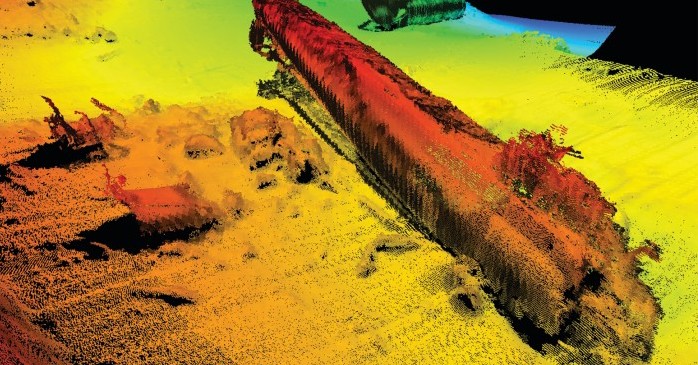German U-boat U-864 sunk off the coast of Fedje, a Norwegian island, during World War II. The submarine was carrying 67 tons of mercury.
When it was discovered in 2003, some of that mercury was seen leaking from broken containers.
Recently, researchers have shown that the sediments surrounding the wreck have been contaminated.
But studies of crabs near the site show that the marine food web may not be negatively affected.
Seafood such as crabs is frequently contaminated with neurotoxic mercury from industrial pollution and the burning of fossil fuels which fall onto the ocean surface.
The discovery of the mercury-bearing submarine at a fairly shallow depth of 150m had scientists, fishermen, and government officials worried.
Norway’s Coastal Administration sampled sediments, and the National Institute of Nutrition & Seafood Research surveyed crabs near the location.
Frank Vanhaecke of Ghent University led a team that analyzed the samples with a variety of methods.
Vanhaecke said that they found some drops of mercury in some of the sediment samples. The wet sediments had 60 to 24,000 mg/kg of mercury.
This compares to 0.02 to 0.1 mg/kg that occurs as background levels in ocean sediments. But crabs collected within four nautical miles of the site did not show any different concentration of mercury than those collected from other areas along Norway’s coast.
They did find that some crabs in the immediate vicinity of the sub had some mercury in their brown meat.
The hypothesis present by the researchers is that the sandy floor where the sub is lying does not have a much organic matter in it.
This limits the methylation of the mercury by microbes. Methylmercury is the most bioavailable and toxic mercury. It seems that the contaminated crabs ingested mercury directly from the sediments around the submarine.
There was no evidence that the metal is transforming into methylmercury.
“That would make the problem much more risky,” Vanhaecke said and would be caused to reassess the situation.
